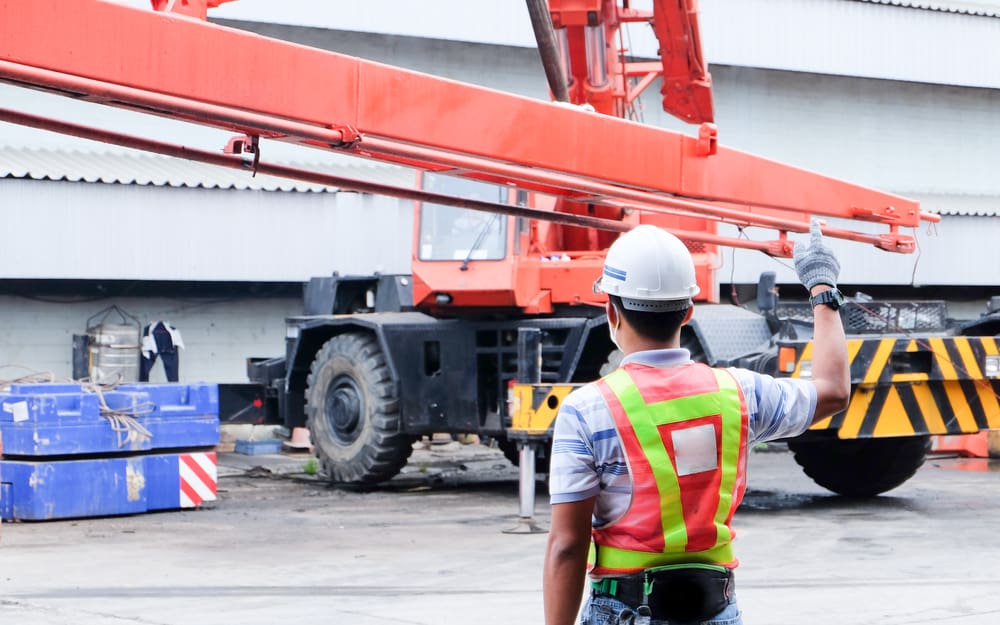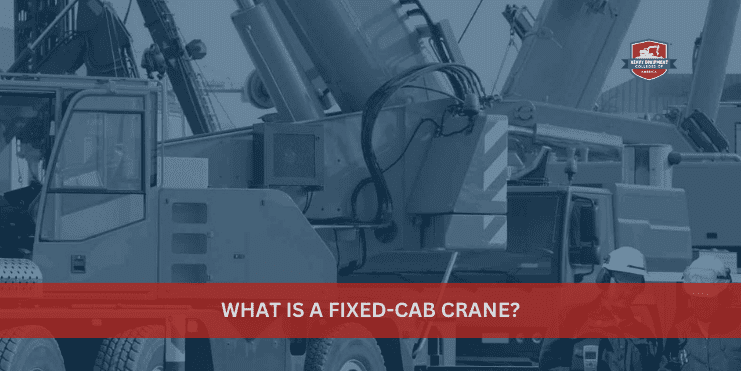Whether installing pipes, power lines, or something else, a fixed-cab crane can help you transport the required materials around the job site. Just as the name implies, a fixed-cab crane has a fixed cab, meaning it’s stationary and doesn’t rotate. The crane itself, however, can still be mobile. Keep reading to see what types of fixed-cab cranes are available, what their features are, how to operate them safely, and how to find the right one for your next project.
Table of Contents
Fixed-Cab Crane Types
Full Overhead Crane
Full overhead cranes are one of the most popular types of fixed-cab cranes because they can transport tall loads vertically, horizontally, and at various angles. The cab and boom work together as one unit.
Welded Overhead
The cab and boom on a welded overhead crane are joined by parallel rotating joints. The boom can swing in the direction of the cab to increase the overall lift area.
Fixed Overhead
Thanks to their large size, fixed overhead cranes can lift loads that are 80 tons or heavier. Rather than connecting and working as one unit, the cab and boom are two individual components mounted on top of each other.
What Is Horizontal Directional Drilling?
Fixed-Cab Crane Features
Lift Capacity
A crane’s lift capacity is how much weight it can lift at one time, usually expressed in tons. The maximum lift capacity for any fixed-cab crane is ten tons.
Hook Length
Fixed-cab cranes have a hook attached to the end of them. The size of the hook impacts the crane’s lift capacity. Longer, larger hooks have a greater lift capacity than shorter, smaller ones.
Hook Capacity
Hook capacity is the maximum weight a hook can lift without posing safety risks. The hook capacity should never exceed the crane’s lift capacity.
Power Source
A crane’s power source can be either a combustion engine or an electrical system.
Hand Signals You Should Know Before Operating a Fixed Cab Crane
Stop Signals
- Stop: Extend one arm with your palm facing down. Swing your arm inward so it touches your chest, then swing it back out to the side.
- Emergency stop: Extend both arms with both palms facing down. Swing both arms inward so they touch your chest, then swing them back out to the sides.
- Dog everything: Hold both hands together in front of your belly button.
Boom and Load Signals
- Hoist load: Extend one arm vertically, and point one finger on that hand upward, making small clockwise motions.
- Lower load: Extend one arm vertically, and point one finger on that hand downward, making small clockwise motions.
- Raise boom and lower load: Extend one arm out to the side, and give a thumbs up while opening and closing your other fingers.
- Lower boom and hoist load: Extend one arm out to the side, and give a thumbs down while opening and closing your other fingers.
These signals apply exclusively to telescopic cranes.
- Telescope out: Point your thumbs outward while holding both hands at your waist. Keep the rest of your fist closed.
- Telescope in: Point your thumbs inward while holding both hands at your waist. Keep the rest of your fist closed
Travel Signals
- Travel (mobile cranes): Extend your hand forward while pointing your fingers upward. Move your hand in and out in the direction the crane should travel.
- Trolley travel (tower cranes): Point one thumb in the direction the crane should travel, keeping your palm facing up and your other fingers closed. Move the thumb back and forth.
- Travel (both tracks for crawler cranes): Close your hand in a fist, and rotate it in front of you. Rotate it toward your body to communicate forward travel and away from your body to communicate backward travel.
- Travel (one track for crawler cranes): Raise one fist in the air to signal which track should be locked, and rotate the other fist in front of you to signal which direction the crane should travel in.
What Is Crane Rigging?
Crane rigging is the process of safely securing the load to the crane in preparation for a lift.
What Is a Sling?
A sling is a lightweight, flexible lifting apparatus that grips and hoists loads. This removable device is essential for all crane operations.
What Are Some Different Sling Types?
Slings can contain one or multiple strands and can be made of textile, rope, metal cable, or chain. Some are also outfitted with metal parts like rigging hooks, rings, or shackles.

Crane Wire Ropes for Hoisting & Lifting
A crane wire rope is a mechanical device enabling cranes to lift and move heavy loads with maximum control. Multiple wires make up multiple strands, and the strands are wrapped around a single, thicker core. The wire rope attaches to the house, and swivels or hooks are attached to it. Wire ropes are:
- Strong and flexible
- Corrosion-resistant
- Abrasion-resistant
- Crushing-resistant
- Fatigue-resistant
- Rotation-resistant
- Cost-effective
Find the Right Equipment Rigging and Crane for Your Project
Different cranes have different functions and purposes. Using the right crane for the application at hand is crucial to the success of your project. Using the wrong crane can damage equipment, cause unnecessary downtime, increase costs, and even injure employees.
Here are some factors you should consider when choosing a crane:
- The weight of the load
- The height of the load
- How high a load needs to be lifted
- The terrain on your construction site
- The cost
Prepare for Your Future at HEC
Are you ready to learn the basic principles of operating a fixed-cab crane? Enroll in the Certificate of Fixed Cab Crane Operation With Rigging and Signaling program at Heavy Equipment Colleges of America. Our accelerated training program will equip you to operate fixed-cab cranes in as little as three weeks. Find an HEC location near you in California, Georgia, or Oklahoma to get started.

